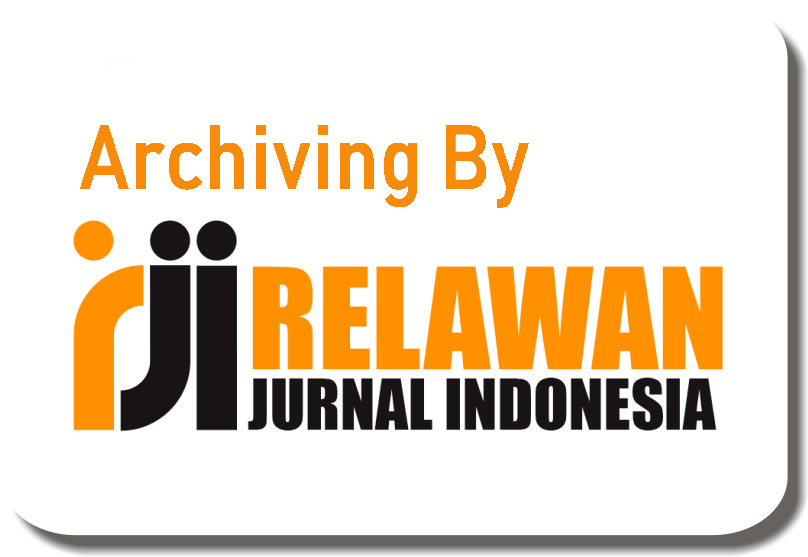Assessing Speaking Skills through Picture Description: Evidence from Senior High Students
Abstract
This study investigated the speaking skills of senior high school students in Pekanbaru, Riau, Indonesia, through a picture description task. Speaking is a crucial skill in English as a Foreign Language (EFL) learning because it enables effective communication in both academic and social contexts. However, despite its significance, limited research has examined Indonesian students’ speaking performance through picture description tasks, particularly in relation to pronunciation and fluency. To address this gap, the present study assessed 46 students using a standardized rubric covering comprehension, grammar, vocabulary, pronunciation, and fluency. Their performances were evaluated by three independent raters to ensure reliability and objectivity. The findings showed an overall mean score of 3.7, categorized as very good. Vocabulary obtained the highest average (4.2), followed by comprehension (3.8), grammar (3.6), and fluency (3.5). Pronunciation recorded the lowest mean (3.3). These results highlight the need for targeted pedagogical strategies to improve pronunciation and fluency while consolidating vocabulary and comprehension skills.
Keywords
Full Text:
PDFReferences
Abrar, M., Fajaryani, N., Masbirorotni, M., Gustin, R. A., & Ningsih, A. W. (2024). EFL learners’ challenges to speak English in online speaking classes. Jurnal Kependidikan Penelitian Inovasi Pembelajaran, 8(2), 179–195. https://doi.org/10.21831/jk.v8i2.52311
Agustin, A. C., Laksmi, E. D., & Suharyadi, S. (2021). Speaking Performance and Grammatical Competence Across Cognitive Learning Styles and Strategy Inventory for Language Learning. Jurnal Pendidikan: Teori, Penelitian, Dan Pengembangan, 6(5), 692. https://doi.org/10.17977/jptpp.v6i5.14758
Al-khresheh, M. H. (2024). Phonetic challenges in English: the impact of mispronunciation of the bilabial plosive/p/on communication among Saudi EFL learners. Cogent Arts and Humanities, 11(1). https://doi.org/10.1080/23311983.2024.2390777
Al-Khresheh, M. H., & Orak, S. D. (2021). The place of grammar instruction in the 21st century: Exploring global perspectives of English teachers towards the role of teaching grammar in EFL/ESL classrooms. World Journal of English Language, 11(1), 9–23. https://doi.org/10.5430/WJEL.V11N1P9
Alamri, W. A. (2018). Communicative Language Teaching: Possible Alternative Approaches to CLT and Teaching Contexts. English Language Teaching, 11(10), 132. https://doi.org/10.5539/elt.v11n10p132
Alharbi, M. A. (2019). Integration of video in teaching grammar to EFL Arab learners. Call-Ej, 20(1), 135–153.
Ali, S. W., Bay, I. W., & Nur, F. S. (2025). Barriers to English-Speaking Proficiency Among Indonesian EFL Learners. 4(6), 1185–1194.
Basir, A., Khamdanah, K., Umaemah, A., & Rizka, H. (2024). Implementing the Hello Talk Application to Teach Speaking Skills in Vocational High Schools. 3(2), 1–14. https://doi.org/10.58418/ijeqqr.v3i2.108
Baskara, R. (2023). The Effects of Flipped Classroom Instruction on Indonesian EFL Students’ Speaking Ability in One Higher Learning Institution. Researchbank.Swinburne.Edu.Au. https://researchbank.swinburne.edu.au/items/a4a4fe7e-e3ba-4d31-af4f-d3d3a09db5b5/1/risang_baskara_thesis.pdf
Brown, H. D. 2004. Language Assessment: Principles and Classroom Practices. New York: Pearson Education Inc.
Creswell, J. W. (2014). Research design: qualitative, quantitative, and mixed method approaches. Los Angeles: SAGE
Dewi, P. W. R., Arimbawa, G. P. A., Putra, H. S., Oya, A., Candiasa, I. M., & Susilawati, A. (2025). Cognitive Load in English as a Foreign Language Speaking Competency of Vocational High School Students. International Journal of Language Education, 9(1), 37–57. https://doi.org/10.26858/ijole.v1i1.71702
Ekaningsih, N., & Faiz Haq, F. D. (2022). The Use of Sequence Pictures in Storytelling for Students’ Speaking Proficiency Development. Eduvelop, 5(2), 102–113. https://doi.org/10.31605/eduvelop.v5i2.1405
Fatima, S. A. (2023). Impact of Dual Coding Strategy to Enhance Students’ Retention of Scientific Concepts in Middle Schools. Annals of Human and Social Sciences, 4(IV). https://doi.org/10.35484/ahss.2023(4-iv)63
Ferginan, Y., Ilma, R., & Desvitasari, D. (2025). The role of non-verbal communication in teaching English speaking skills: students’ voices. ENGLISH FRANCA: Academic Journal of English Language and Education, 9(1), 31–44. https://doi.org/10.29240/ef.v9i1
Gilakjani, A. P., & Sabouri, N. B. (2017). Teachers’ Beliefs in English Language Teaching and Learning: A Review of the Literature. English Language Teaching, 10(4), 78. https://doi.org/10.5539/elt.v10n4p78
Han, Q. (2016). Rater cognition in L2 speaking assessment: A review of the literature. Teachers College Columbia University Working Papers in. TESOL & Applied Linguistics, 16(1), 1–24.
Harris, D. P. (1974). Testing English as a second language. New York: McGraw-Hill.
Harmer, J. (2007). The practice of English language teaching 4th ed. Harlow Essex. Pearson Education Limited.
Hidayah, H., Sahraini, S., & Jufriadi, J. (2024). Bridging Cultures Through Language : Developing English- Speaking Materials for Multicultural Education Contexts. 6(3), 244–264.
Ma, Y., Wei, C., & Huang, F. (2024). A full-flipped classroom mode from the perspective of Junior High School English teachers. Heliyon, 10(2), e24864. https://doi.org/10.1016/j.heliyon.2024.e24864
Maharani, S., Azzyati, N., & Andayani, R. (2023). Enhancing Junior High School Students’ Speaking Skills in EFL Class Through Multimodal Vlogs: A Need Analysis. Innovative: Journal of Social Science Research, 4(4), 1–10. https://j-innovative.org/index.php/Innovative/article/view/14230
Mamun, M. (2024). Use of audio-visual aids (AVAs) to improve EFL speaking at the secondary level in Bangladesh. June. https://doi.org/10.5281/zenodo.11532820
Marlia, M., Akbal, F. A., Nur, S., & McDonald, D. (2023). EFL Students’ Speaking Anxiety in Indonesian Senior High School. Lingua Didaktika: Jurnal Bahasa Dan Pembelajaran Bahasa, 17(1), 71. https://doi.org/10.24036/ld.v17i1.121085
Marpaung, M. S. (2022). Vocabulary Enrichment through Picture Word Inductive Model (PWIM). Journal of English Language Pedagogy, Literature, and Culture, 288–302. https://doi.org/10.35974/acuity.v8i2.3123
Mohd Noh, M. F., & Mohd Matore, M. E. E. (2022). Rater severity differences in English language as a second language speaking assessment based on rating experience, training experience, and teaching experience through many-faceted Rasch measurement analysis. Frontiers in Psychology, 13(July), 1–13. https://doi.org/10.3389/fpsyg.2022.941084
Msimeer, A. M. (2021). Methods and Approaches of Teaching English : a Historical Review June, 79–98.
Muhammad Asikin. (2023). The use of Describing Picture Strategy to improve Students’ Speaking Skill. Journal of Applied Linguistics and English Education, 1(2), 41–49. https://doi.org/10.36456/jalle.v1i2.8697
N.M., S., I Gede, B., & L.D.S., A. (2018). Scientific Approach Based Translation Used By Efl Junior High School Teacher. Lingua Scientia, 25(2), 62. https://doi.org/10.23887/ls.v25i2.18825
Naviantara, D., Suwartono, T., & Romdona, Y. (2024). Enhancing Students’ Motivation in English Language Learning Through Gamification. Jurnal PTK Dan Pendidikan, 9(2), 119–128. https://doi.org/10.18592/ptk.v9i2.11080
Nazhifah, I., & Lubis, Y. (2024). The Effectiveness of Audiovisual in Improving English Speaking Skills in Junior High School Students. Didaktika: Jurnal Kependidikan, 13(2), 2739–2746. https://jurnaldidaktika.org/contents/article/view/890
Ngan, L. T. K., & Lan, T. T. T. (2024). Utilizing Visual Stimuli to Foster Engagement Among English Speaking Skill Learners During Instructional Sessions. European Journal of Theoretical and Applied Sciences, 2(3), 41–53. https://doi.org/10.59324/ejtas.2024.2(3).05
Nurdini, R. A. (2018). the Use of Picture To Improve Students’ Speaking Skill in English. IJET (Indonesian Journal of English Teaching), 7(2), 157–162. https://doi.org/10.15642/ijet2.2018.7.2.157-162
Oktaviani, A. L., Rapiudin, T. U., & Suryadi, A. (2021). Enhancing EFL Students ’ Speaking Skills Through the Debate Technique : A Classroom Action Research Study. Ournal of English Teaching & Applied Linguistics, 6(2), 177–178.
Pratiwi, Z. F., & Ayu, M. (2020). the Use of Describing Picture Strategy To Improve Secondary Students’ Speaking Skill. Journal of English Language Teaching and Learning, 1(2), 38–43. https://doi.org/10.33365/jeltl.v1i2.603
Rahman, M. M., & Jamila, M. (2024). Effectiveness of Audiovisual Materials in Developing Tertiary Level Learners’ English Listening and Speaking Skills. International Journal of Language Testing, 14(2), 67–81. https://doi.org/10.22034/IJLT.2024.430050.1312
Rizal, S., & Pancor, I. A. I. H. (2024). the Influence of Audio-Visual Media on Students ’ Speaking Skills of the First Semester of Pai Program. 11, 314–321.
Salam, U., & Nurnisa, N. (2021). Students’ difficulties in learning vocabularies. English Community Journal, 5(1), 46–53. http://jurnal.um-palembang.ac.id/englishcommunity/indexISSN2549-9009
Sayogie, F., & Adbaka, M. F. (2022). Interlingual Errors in Indonesian EFL learners’ Pronunciation: From Minimal Pairs to Speaking Ability. Elsya : Journal of English Language Studies, 4(2), 131–146. https://doi.org/10.31849/elsya.v4i2.9693
Seroja Br Ginting, R., & Fithriani, R. (2021). Using the Hello English Application in the EFL Classroom: Its Efficacy in Helping Students to Master Vocabulary. KnE Social Sciences, 2021, 592–600. https://doi.org/10.18502/kss.v5i4.8714
Shuib, A., Ismail, L., & Abdul Manaf, U. K. (2020). Scaffolding speaking tasks using videoblog portfolio in an ESL classroom. Universal Journal of Educational Research, 8(1 A), 44–52. https://doi.org/10.13189/ujer.2020.081307
Syamsu, A. (2023). using describing picture as a strategy in improving students’ speaking ability Sahruni. Agustus, 2(2), 311–318.
Tiana, D. M., Jimmi, J., & Lestari, R. (2023). The Effect of Grammar Mastery and Self-Esteem towards Students’ Speaking Skill. Scope : Journal of English Language Teaching, 7(2), 157. https://doi.org/10.30998/scope.v7i2.15343
Wahyuni, K., & Maming, S. (2019). The Use Of Describing Picture Strategy In Improving The Students’ Speaking Ability At UPTD SMPN 22 Barru. Journal of Language Teaching and Pedagogy, 2, 2615–3629.
Wang, Y., Derakhshan, A., Pawlak, M., & Mehdizadeh, M. (2024). Exploring the psychometric properties of the Grammar Learning Strategy Inventory in the Chinese EFL context. Studies in Second Language Learning and Teaching, 14(3), 515–543. https://doi.org/10.14746/ssllt.39357
Yusnitasari, R., & Suwartono, T. (2020). Top Ten Most Problematic Grammatical Items for Indonesian Tertiary Efl Learner Writers. Premise: Journal of English Education, 9(1), 1. https://doi.org/10.24127/pj.v9i1.2476
Zhong, L. (2024). Towards the pivotal factors for the influence of flipped classroom on students’ self-regulated learning and EFL speaking competence. Cogent Education, 11(1). https://doi.org/10.1080/2331186X.2024.2351733
DOI: https://doi.org/10.31004/jele.v10i6.1338
Refbacks
- There are currently no refbacks.
Copyright (c) 2025 Johari Afrizal, Mumlikka Ayoddukki, Yulianto

This work is licensed under a Creative Commons Attribution-ShareAlike 4.0 International License.



